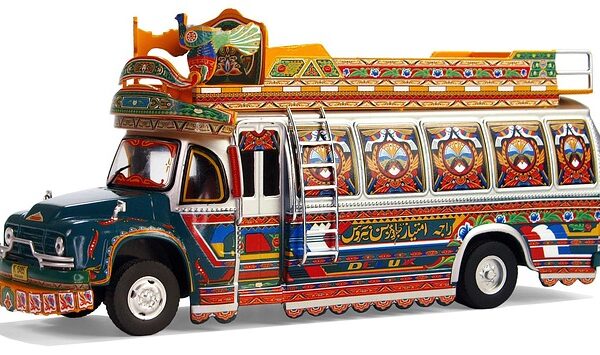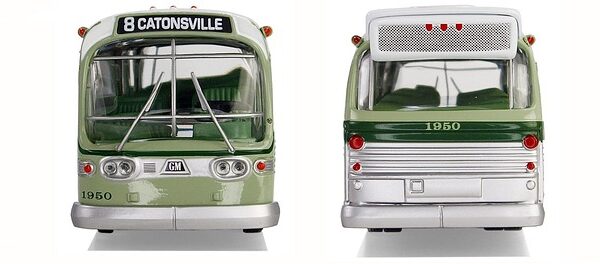Select Buses: A Comprehensive Overview
Introduction
Welcome to an in-depth exploration of “Select Buses,” a rapidly evolving segment within the global transportation sector. This article aims to equip readers with a thorough understanding of this innovative concept, its applications, and its profound impact on both local communities and the international stage. By delving into various facets, from technological advancements to policy frameworks, we will uncover the potential and challenges associated with select buses and their role in shaping sustainable mobility.
Understanding Select Buses: Unveiling the Concept
Definition:
Select Buses, often referred to as dedicated or specialized bus services, are a form of public transportation designed to cater to specific passenger needs and routes. These buses operate on predefined schedules and designated lanes/corridors, offering a more efficient and tailored transit experience compared to traditional mass-transit systems.
Core Components:
- Dedicated Infrastructure: Select Bus Services (SBS) utilize exclusive lanes or corridors, ensuring faster travel times and reduced congestion. This separation from general traffic allows for more predictable schedules and improved passenger comfort.
- Optimized Routing: Routes are carefully planned to serve high-demand areas, connecting major hubs, residential neighborhoods, commercial centers, and important landmarks.
- Enhanced Frequency: SBS operate with higher frequency compared to regular bus services, providing more options for passengers, especially during peak travel times.
- Improved Passenger Experience: Onboard amenities such as priority seating, real-time information displays, and better accessibility features enhance passenger satisfaction.
Historical Context:
The concept of select buses emerged in the mid-20th century as cities sought to address growing transportation demands. Early examples include the introduction of trolleybuses and dedicated bus ways in European urban centers. Over time, SBS evolved with advancements in technology and a better understanding of urban mobility needs. Today, it stands as a versatile solution, adaptable to various city sizes and transportation challenges worldwide.
Global Impact and Trends: A World of Opportunities
International Influence:
Select Buses have left an indelible mark on cities across the globe, offering sustainable and efficient transportation alternatives. From bustling metropolitan areas like New York City and London to fast-growing Asian megacities, SBS have become a popular choice for urban mobility planners. The United Nations’ Sustainable Development Goals (SDGs) have further propelled their adoption, emphasizing the need for inclusive, safe, and affordable transportation systems.
Regional Trends:
- North America: Cities like Seattle and Los Angeles have successfully implemented SBS, improving transit efficiency and reducing private vehicle usage.
- Europe: Countries such as Germany and the Netherlands are renowned for their comprehensive SBS networks, integrating seamlessly with other public transport modes.
- Asia: Rapidly growing cities in China and India are embracing SBS to manage traffic congestion and cater to increasing passenger demands.
- Africa: Select Bus services are gaining traction in South African cities, providing much-needed public transportation options.
Economic Considerations: Driving Mobility Forward
Market Dynamics:
The global select bus market is experiencing steady growth, driven by urban population expansion and the need for efficient, cost-effective transportation solutions. According to a 2023 report by Market Research Future (MRFR), the market value is projected to reach USD 19.5 billion by 2027, growing at a CAGR of 7.8% during the forecast period.
Investment Patterns:
Governments and private investors are recognizing the economic benefits of SBS. These include reduced traffic congestion, improved air quality, and enhanced urban livability, all of which attract businesses and tourists. Many cities offer public-private partnerships (PPPs) to encourage investment in SBS infrastructure and operations.
Economic Impact:
- Job Creation: The development and maintenance of SBS networks generate employment opportunities in transportation, engineering, and tourism sectors.
- Tourism Boost: Efficient public transport systems, including select buses, can significantly enhance a city’s appeal to visitors, contributing to local economies.
- Reduced Congestion Costs: By easing traffic congestion, SBS can lower the economic burden associated with road delays and fuel inefficiency.
Technological Advancements: Revolutionizing Urban Mobility
Smart Systems Integration:
One of the most significant technological breakthroughs in select buses is the integration of smart systems. These include:
- Real-time Passenger Information: GPS and cloud-based technologies enable passengers to access real-time bus locations, arrival times, and route updates.
- Contactless Payment Systems: Fare payment through mobile apps or smart cards streamlines the boarding process, reducing waiting times.
- Energy Efficient Vehicles: Electric and hybrid select buses are gaining popularity, offering environmental benefits and reduced operational costs.
Autonomous Technology:
The advent of autonomous vehicles has sparked curiosity about their potential in SBS. While fully autonomous buses are still in development, advanced driver-assistance systems (ADAS) are being trialed on dedicated lanes. These technologies promise to enhance safety, improve traffic flow, and reduce labor costs.
Data Analytics:
Big data analytics plays a crucial role in optimizing SBS operations. By analyzing passenger patterns and real-time data, transport authorities can:
- Adapt Service Frequencies: Adjust bus schedules based on demand, ensuring efficient utilization of resources.
- Predict Maintenance Needs: Utilize predictive analytics to forecast vehicle maintenance requirements, minimizing downtime.
- Enhance Route Planning: Continuously refine routes to better serve emerging urban centers and changing passenger needs.
Policy and Regulation: Steering the Course
Regulatory Frameworks:
The development and operation of select buses are governed by a web of policies and regulations, ensuring their safety, efficiency, and environmental sustainability. These include:
- Transportation Planning: Urban mobility plans often dictate SBS routes, stops, and frequency to align with broader transportation goals.
- Environmental Regulations: Emission standards and fuel efficiency mandates drive the adoption of eco-friendly select buses.
- Safety Standards: Rigorous safety protocols cover vehicle maintenance, driver qualifications, and passenger security.
Policy Initiatives:
- Incentives for Private Investment: Governments offer tax breaks, subsidies, and favorable regulations to encourage private sector participation in SBS development.
- Public-Private Partnerships (PPPs): PPP models allow private operators to build, operate, and maintain SBS infrastructure, sharing risks and rewards with public authorities.
- Integrated Transportation Planning: Many cities are adopting integrated mobility solutions, combining select buses with other modes like light rail and cycling networks.
Challenges and Criticisms: Overcoming Barriers
Main Challenges:
- Funding and Infrastructure Costs: Developing dedicated infrastructure and purchasing specialized vehicles require substantial investments, posing financial challenges for some municipalities.
- Traffic Management: Ensuring the efficient operation of SBS within existing traffic networks can be complex, particularly in densely populated areas.
- Public Acceptance: Changing public perceptions and habits regarding bus transportation may be necessary to achieve widespread adoption of SBS.
- Technology Integration: Implementing advanced technologies requires significant technical expertise and ongoing maintenance support.
Proposed Solutions:
- Multi-level Funding: Combining government budgets, private investments, and public-private partnerships can help mitigate funding gaps.
- Smart Traffic Management Systems: Utilizing intelligent transportation systems (ITS) improves traffic flow, reduces congestion, and enhances SBS performance.
- Public Awareness Campaigns: Educating the public about SBS benefits through awareness programs and community engagement initiatives.
- Phased Implementation: Starting with pilot projects allows for learning, testing, and refining before full-scale deployment.
Case Studies: Real-World Success Stories
Case 1: New York City, USA – The Select Bus Service (SBS) Revolution
New York City’s SBS initiative has transformed urban mobility. By using dedicated lanes and advanced technology, the city increased bus speeds by 20%, reduced travel times by 35%, and improved passenger comfort. The program also achieved a 10% reduction in private vehicle miles traveled, contributing to lower traffic congestion and better air quality.
Case 2: London, UK – Efficient and Sustainable Transit
London’s Bus Rapid Transit (BRT) system, featuring dedicated bus ways and frequent service, has become a global model for urban mobility. The system’s success lies in its integration with other transport modes, offering easy connections and improved accessibility. London’s BRT has significantly reduced journey times, attracting millions of passengers annually.
Case 3: Johannesburg, South Africa – Connecting Communities
Johannesburg’s Rapid Transit System (RTS) aims to provide efficient and affordable transportation across the city. The SBS network connects low-income communities with economic hubs, promoting social inclusion and access to opportunities. The RTS has been instrumental in reducing public transport wait times and improving overall mobility.
Future Prospects: Shaping Urban Mobility
Emerging Trends:
- Electric and Zero-Emission Buses: The push for sustainable transportation will drive the adoption of electric and hydrogen-powered select buses, aiming for net-zero emissions.
- On-Demand Services: Ride-hailing and micro-mobility options, coupled with SBS, could offer dynamic and personalized transportation solutions.
- Smart City Integration: Select buses will become integral parts of smart cities, leveraging IoT devices and data analytics to optimize operations.
- Autonomous Vehicles: While still evolving, autonomous select buses may revolutionize public transport, enhancing safety and efficiency.
Growth Areas:
- Suburban and Regional Connectivity: SBS can play a pivotal role in connecting suburban areas with city centers, reducing travel times and commuting stress.
- Tourism and Cultural Centers: Dedicated bus services for tourist attractions and cultural hubs can enhance visitor experiences and local economies.
- Last-Mile Mobility: Integrating select buses with micro-mobility options (e.g., electric scooters, bikes) can provide efficient last-mile connections to public transit hubs.
Conclusion: Navigating the Future of Urban Mobility
Select Buses have emerged as a powerful tool in urban mobility planning, offering efficient, sustainable, and tailored transportation solutions. From their technical advancements to policy frameworks, this article has explored the multifaceted nature of SBS. As cities continue to grapple with growing populations and changing mobility demands, select buses will be at the forefront of shaping smarter, more livable urban environments.
The future prospects for SBS are promising, with technology playing a pivotal role in enhancing passenger experiences and optimizing operations. As we navigate an ever-evolving transportation landscape, the ongoing support from governments, transport authorities, and the private sector will be crucial to realizing the full potential of select buses and creating sustainable cities of tomorrow.
FAQ: Answering Common Queries
Q: How do Select Buses differ from traditional buses?
A: Select Buses operate on dedicated lanes/corridors, allowing for higher speeds and more frequent service compared to regular buses that share roads with general traffic.
Q: What are the environmental benefits of SBS?
A: SBS contribute to environmental sustainability by reducing traffic congestion, lowering vehicle emissions, and encouraging the use of public transportation, all of which help combat air pollution and climate change.
Q: Can Select Buses operate in low-income areas?
A: Absolutely! SBS can be tailored to serve various communities, including low-income neighborhoods, by offering affordable fares and connecting them to economic opportunities and essential services.
Q: How do technology advancements benefit SBS operations?
A: Advanced technologies like real-time tracking, contactless payment systems, and data analytics enable SBS operators to optimize routes, improve passenger comfort, and enhance overall system efficiency.
Q: Are Select Buses safe compared to other modes of public transport?
A: Yes, with rigorous safety standards, driver training programs, and regular vehicle maintenance, select buses are considered one of the safest forms of public transportation.
Bus apps revolutionize urban mobility with real-time info, personalized planning, and enhanced fleet management for select buses. Top-rated apps offer route tracking, accurate schedules, and scenic ro…….
Understanding local bus routes with Select Buses is vital for efficient urban navigation. Familiarize yourself with primary thoroughfares, specialized services, and amenities like comfortable seating……..
Select Buses adapts to diverse client needs in the competitive transportation market by offering flexible, customizable solutions, including unique bus types and efficient timetables. Customers demand…….
Leveraging Select Buses for convenient and affordable urban navigation. Use online tools to select efficient routes connecting major hubs and neighborhoods. Save on costs and ensure safe travel throug…….
Bus driver training covers vehicle systems, safety protocols, and passenger management for both diesel and electric buses. Jurisdictions set minimum training hours and skills, blending theory with pra…….
Bus stop location systems in modern cities leverage GPS tracking, digital signage, and online mapping tools for efficient navigation. Select Buses with scheduled intervals, special needs services, and…….
In a mobile society with diverse travel needs, Select Buses stands out for reliable bus rentals. When choosing, consider timetables, group-specific needs, and bus quality (age, amenities). For rental…….
Integrating Select Buses into urban infrastructure through precise bus stop mapping enhances mobility and accessibility. Tools like Google Maps and OpenStreetMap offer APIs for real-time data embeddin…….
Select Buses represent a significant evolution in travel, offering personalized and inclusive experiences with specialized services for diverse needs. Tour packages featuring these buses provide comfo…….
Designing an optimal public transit app for Select Buses involves understanding user needs from comfort to eco-friendliness. Real-time info on bus availability, routes, and onboard amenities like recl…….









